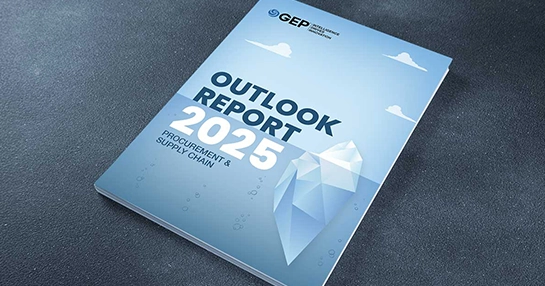
Procurement Request: The Hidden Profit Lever You're Ignoring
- Procurement requests establish governance over organizational spending while creating an auditable trail of purchasing decisions.
- Effective requests require completeness, clarity, timeliness, strategic alignment, data-driven justification, and risk awareness.
- AI integration is transforming procurement requests from simple transactional documents into strategic tools that drive business value.
April 28, 2025 | Procurement Strategy 4 minutes read
The efficient movement of goods and services from suppliers to organizations forms the backbone of operational success. At the heart of this intricate process lies a seemingly simple document that initiates the entire procurement cycle — the procurement request.
While often overlooked in discussions about supply chain optimization, this initial step establishes the foundation upon which successful purchasing activities are built. Organizations with the ability to create precise, timely and well-structured procurement requests gain a competitive advantage through faster fulfillment cycles, better vendor relationships, and improved bottom-line results.
Ready for Growth? GEP Has the Answers
Transform your business with our AI-powered procurement and supply chain software and services
What is Procurement Request?
A procurement request, sometimes called a purchase requisition, is a formal document that initiates the procurement process within an organization. It represents an internal request from a department or individual seeking to acquire specific goods or services from external suppliers. The procurement request serves as the critical first step in the purchasing workflow, acting as a bridge between the identification of a business need and the actual acquisition of resources.
Unlike a purchase order, which is an external commitment to a supplier, a procurement request remains an internal document. It captures essential information about what is needed, when it's required, and why it's necessary, enabling procurement professionals to evaluate the request against budget constraints, existing inventory, and organizational priorities before proceeding.
Why is Procurement Request Important?
The procurement request plays a key role in supply chain management for several compelling reasons:
- It establishes proper governance and control over organizational spending, preventing unauthorized acquisitions and ensuring alignment with budgetary constraints and financial policies.
- Procurement requests create an auditable trail of purchasing decisions, invaluable during financial audits, compliance reviews, and performance assessments.
- These requests enable better planning and prioritization of procurement activities, helping teams identify opportunities for consolidation, negotiate volume discounts, and schedule purchases strategically.
- Furthermore, procurement requests facilitate cross-functional collaboration, creating a structured communication channel between requesting departments and procurement specialists.
- Well-crafted procurement requests contribute to supplier relationship management by providing vendors with clear, consistent information about the organization's needs, reducing misunderstandings and strengthening partnerships.
What's Total Procurement Orchestration — and Why Should You Care?
Discover how to optimize spend and create a frictionless procurement experience in this GEP Bulletin
Components of a Procurement Request
A procurement request typically includes several essential components that provide the procurement team with sufficient information to process the request effectively:
Requester information identifies the individual or department initiating the request, including contact details for follow-up questions. This accountability establishes a clear point of contact for the procurement team throughout the process.
Item specifications form the core of the request. This details exactly what is being requested — including quantity, technical specification, quality parameters, acceptable alternatives, and any specified standard or certification.
Delivery requirements specify when and where the requested items are needed, including the requested delivery date and location. For complex projects, this may include a schedule of multiple deliveries or milestone-based delivery requirements.
Budget information indicates the cost center or project code to which the purchase should be charged, along with any applicable spending limits. Some organizations also require requesters to provide estimated costs or price ranges based on previous purchases.
Business justification explains why the purchase is necessary, connecting it to specific business objectives, operational needs, or strategic initiatives. This justification helps approvers evaluate the necessity and priority of the request.
Supporting documentation may include quotations from potential suppliers, technical drawings, historical purchase data, or any other information that helps contextualize and validate the request.
Approval workflow outlines the sequence of authorizations required before the request can proceed to the next stage. This typically varies based on factors such as monetary value, risk profile, and organizational policies.
What Makes an Effective Procurement Request?
There are several characteristics (completeness, clarity, timeliness, strategic alignment, etc.) that distinguish high-quality procurement requests:
Completeness ensures all required information is provided upfront, eliminating the need for procurement teams to chase down missing details.
Clarity in describing requirements minimizes ambiguity and reduces the risk of procuring incorrect items.
Timeliness involves submitting requests with sufficient lead time to accommodate the procurement cycle, approval process, supplier selection, and delivery timeline.
Strategic alignment connects the requested purchase to broader organizational objectives or departmental goals.
Data-driven justification uses historical information, market analysis, and performance metrics to support the business case for the purchase.
Risk awareness acknowledges potential challenges associated with the request, enabling the early development of mitigation strategies.
How AI Can Enhance the Procurement Request Process
Artificial intelligence is transforming procurement request by introducing new efficiencies throughout the process. AI systems can analyze historical purchase data to suggest optimal specifications, quantities, and suppliers based on past performance. Natural language processing (NLP) capabilities enable the extraction of key information from unstructured requests, automatically populating standardized forms and flagging incomplete submissions. Machine learning algorithms can predict approval timelines, identify potential bottlenecks, and recommend alternative sourcing strategies when constraints arise.
That said, the human element remains irreplaceable for complex procurement decisions that require contextual understanding, supplier relationship management, and strategic alignment with organizational goals. Why? That’s because the most successful implementations balance AI's analytical power with procurement professionals' expertise to create a synergistic approach to purchase requisitioning.
Don’t Let Procurement Become a Hidden Barrier and Hold You Back
Explore how leading firms are using AI to transform procurement into a strategic driver of expansion
Navigating the Future of Procurement Requests
As organizations continue to digitize their supply chains, procurement requests will evolve from simple transactional documents into strategic tools for driving business value. The future lies in their integration with broader enterprise systems, creating seamless connections between operational needs, financial planning, and supplier management. Forward-thinking organizations are exploring blockchain-enabled procurement requests that provide immutable records and smart contracts to automate subsequent steps.
Sustainability considerations too will increasingly influence how procurement requests are structured and evaluated, with greater emphasis on environmental impact and social responsibility.



